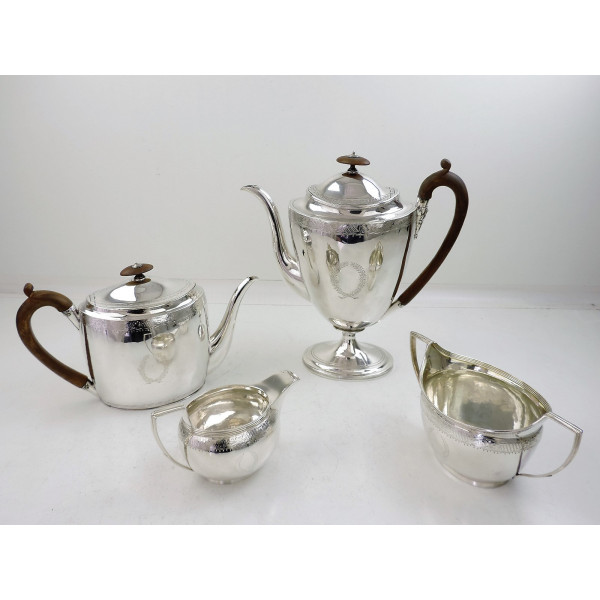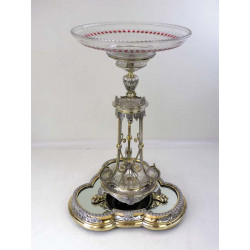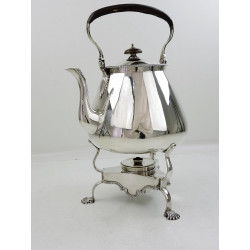Georgian 4-piece Tea Service











Sold
Tea Service (4-piece) - NeoClassical - London 1799-1805 by John Emes - Teapot: 17cm high; 27.2cm long (handle to spout) 1300mls volume. Coffee Pot: 27.5cm high; 26.7cm long (handle to spout); 1550mls volume. Sugar Bowl: 20.6cm x 10.5cm; 10.5cm high. Cream Jug: 15.8cm x 7cm; 9.5cm high. Total combined weight: 1515g gross - ED/5069
Four piece tea services rarely exist before the final years of the 18th century, previously they were supplied independently and then during the 1770's they began to be supplied as three piece services, without the coffee pot. This set is therefore an early example of all four pieces complementing each other. It was made by John Emes who was one of the most important silversmiths of the period and his company went on to become Barnards who were the largest London based silver manufacturers of the 19th century.
The service itself is very attractively decorated with Neoclassical style engraving that is typical of the elegant style of the turn of the century, each piece bearing a laurel wreath cartouche to both sides that is free from personalisation. The quality is evident throughout and the flush secret hinges to both pots and the covered spout to the creamer are testament to that. The tea and coffee pots are fitted with pear wood handles and conforming finials to protect the user from heat.
It is not unusual for tea services of the period to bear different date letters. There are three potential reasons why this set ranges from a 1799 tea and coffee pot to an 1804 sugar bowl and 1805 cream jug; i) larger manufacturers had plentiful ready-made stock awaiting purchase and items were sold from stock without concern to the date letters; ii) the retailer may have sold individual pieces from the set and replaced them with pieces of different dates; iii) the original owner may have added to the set over a period of years. Whatever the reason, this is still considered to be a straight service and is a fine example of its type and continues to be in excellent condition.



